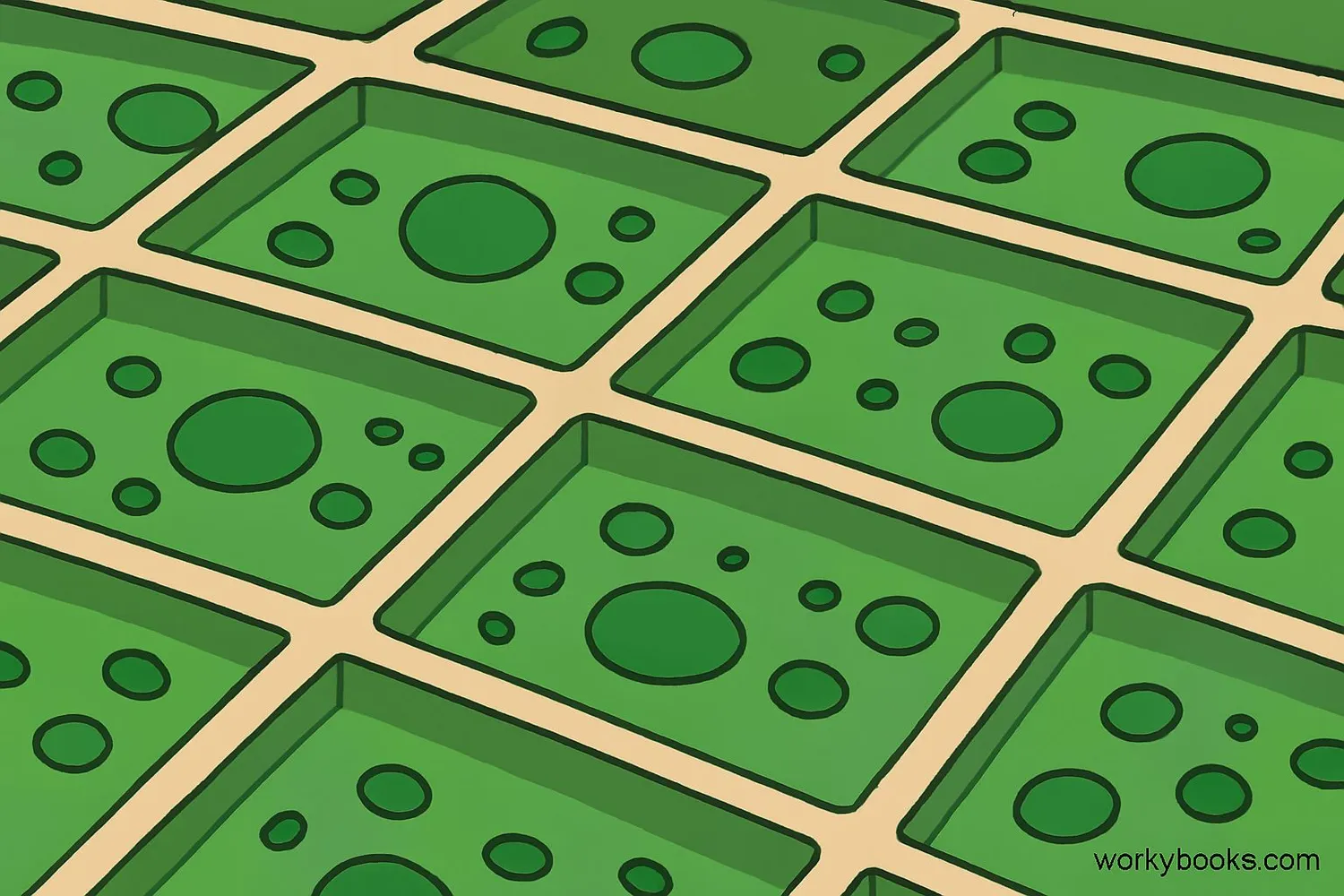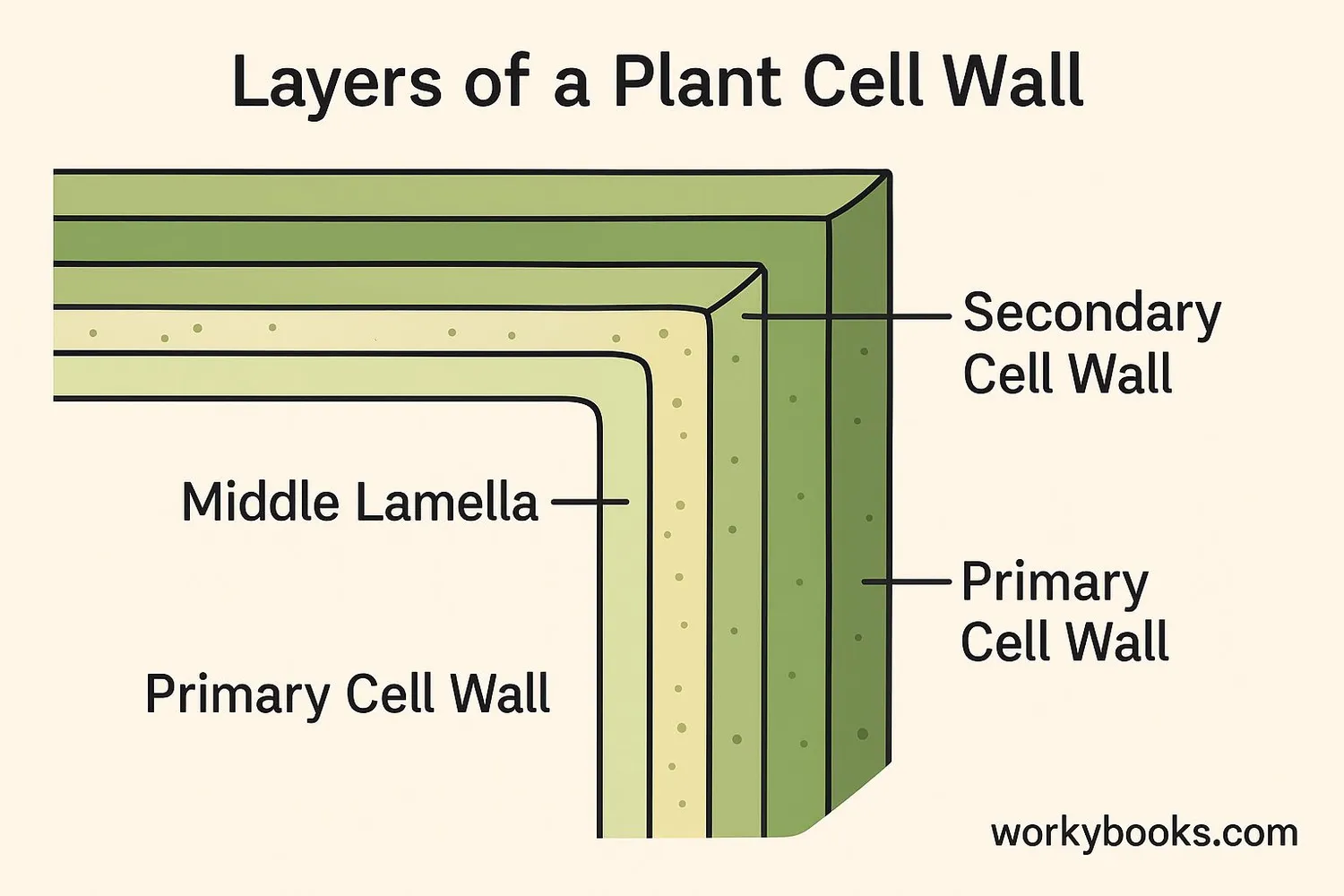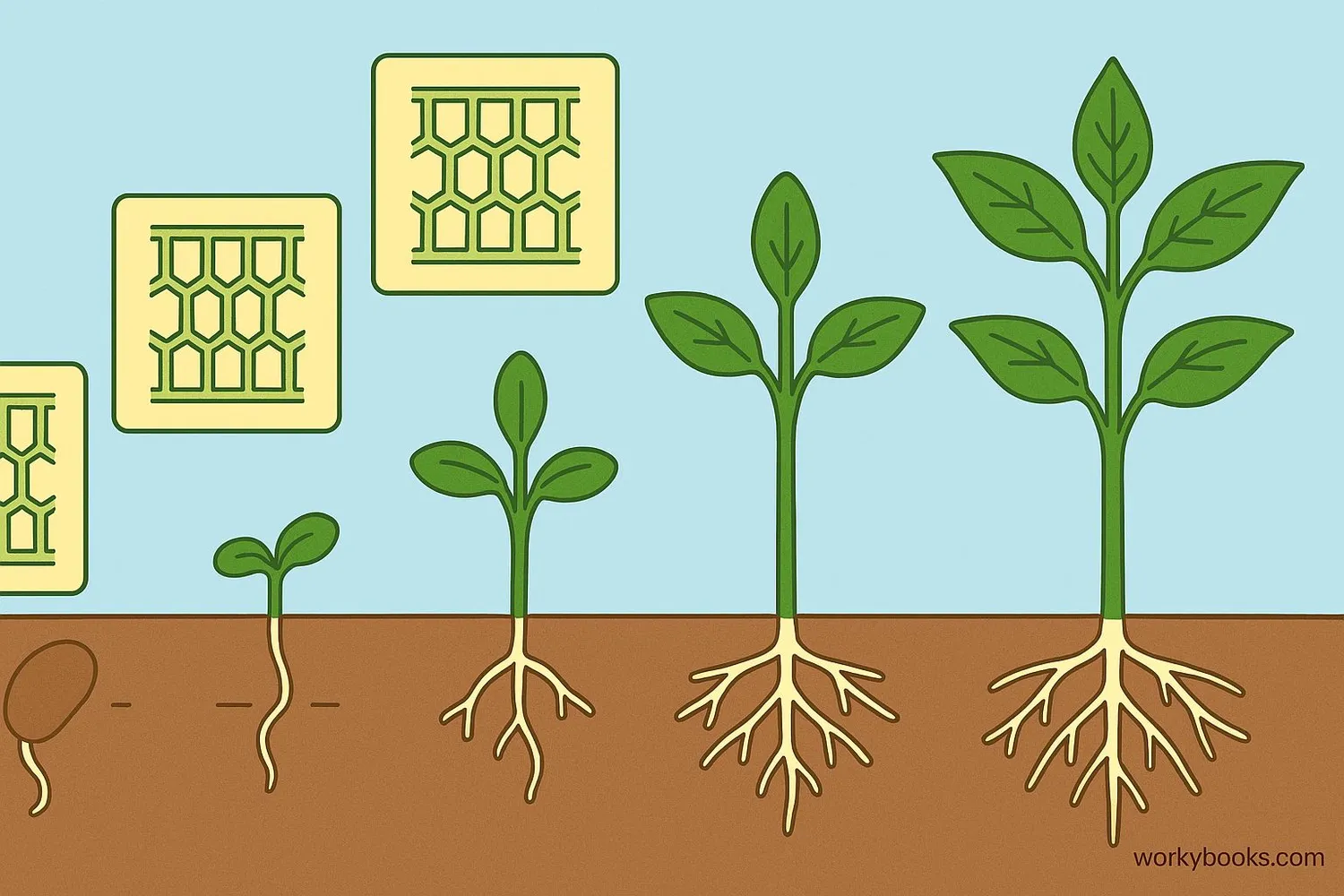Cell Wall - Definition, Examples, Quiz, FAQ, Trivia
Discover how plants build their strong outer layer
What is a Cell Wall?

A cell wall is a strong, protective layer that surrounds plant cells. It's like a plant's built-in suit of armor! While animal cells have only a flexible cell membrane, plant cells have both a membrane AND a rigid cell wall.
The cell wall gives plants their structure and shape. This is why plants can stand tall without bones like animals. Think about how a tree grows straight up toward the sky - that's thanks to its strong cell walls!
Did You Know?
Wood is mostly made of cell walls! When you see a wooden table or chair, you're looking at millions of plant cell walls stacked together.
Key facts about cell walls:
• Found in plants, fungi, and some bacteria
• Made mostly of a tough material called cellulose
• Provides shape and structural support
• Protects the delicate cell inside
• Allows plants to grow tall toward sunlight
Structure & Composition

Plant cell walls have a complex structure made of several layers. Each layer has a special job and composition:
Middle Lamella
The outermost layer that glues adjacent cells together
Primary Wall
The first layer formed, flexible to allow growth
Secondary Wall
A thicker, stronger layer added after growth stops
What are cell walls made of?
The main ingredient in plant cell walls is cellulose - long chains of sugar molecules that form strong fibers. These fibers are bundled together like steel cables in a bridge, creating incredible strength.
Other important components include:
• Hemicellulose: Helps bind cellulose fibers together
• Pectin: A glue-like substance that holds cells together
• Lignin: A hard material that makes wood strong
Amazing Fact!
Cellulose is the most abundant natural polymer on Earth! It's what makes plants the dominant life form on land.
Function & Importance

Cell walls serve several vital functions for plants:
Protection
Shields the cell from damage and disease
Structure
Provides shape and mechanical strength
Water Regulation
Controls water movement in and out of cells
Without cell walls, plants couldn't:
• Stand upright against gravity
• Grow tall to reach sunlight
• Withstand wind and weather
• Protect themselves from predators
Cell walls also allow plants to create specialized structures like:
• Strong tree trunks
• Protective thorns
• Flexible vines
• Waterproof bark
Human Uses
Humans use plant cell walls for paper, wood products, cotton fabrics, and even some medicines!
Test Your Knowledge
How much have you learned about plant cell walls? Take this quiz to find out!
Questions & Answers
Here are answers to common questions about cell walls:
Fascinating Facts
Discover some amazing facts about cell walls!
Nature's Building Material
Cell walls are the most abundant biological material on Earth. In fact, cellulose from plant cell walls makes up about 33% of all plant matter!
Ancient Material
The oldest known cell walls are from fossilized plants that lived over 400 million years ago. These ancient cell walls helped plants colonize land.
Human Uses
We use plant cell walls every day! Paper, cardboard, cotton clothing, wood furniture, and even some foods like celery and broccoli are all made of cell walls.
Stronger Than Steel?
Pound for pound, cellulose fibers in cell walls are stronger than steel! The way these fibers are arranged gives plants incredible strength.


